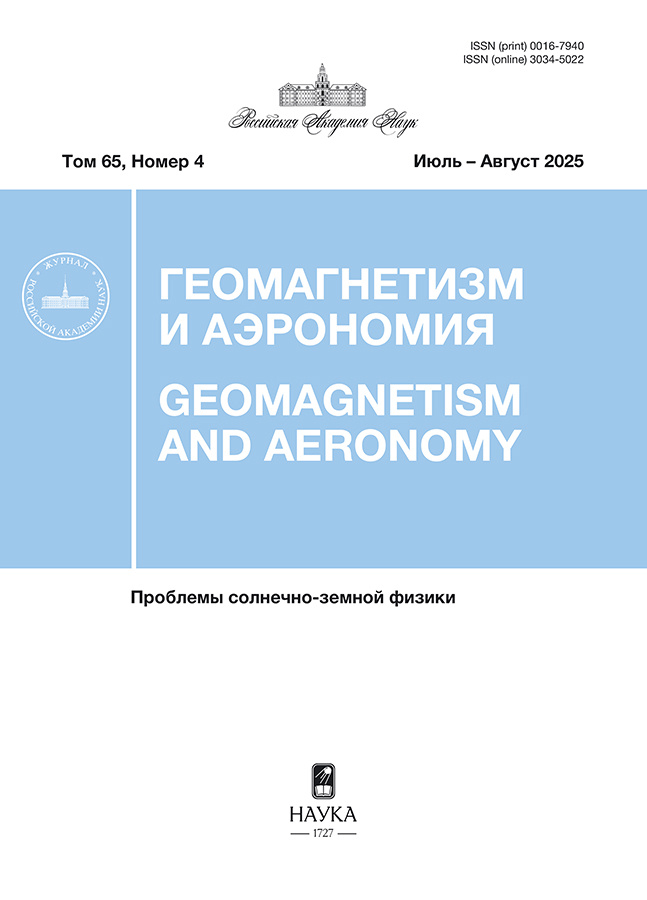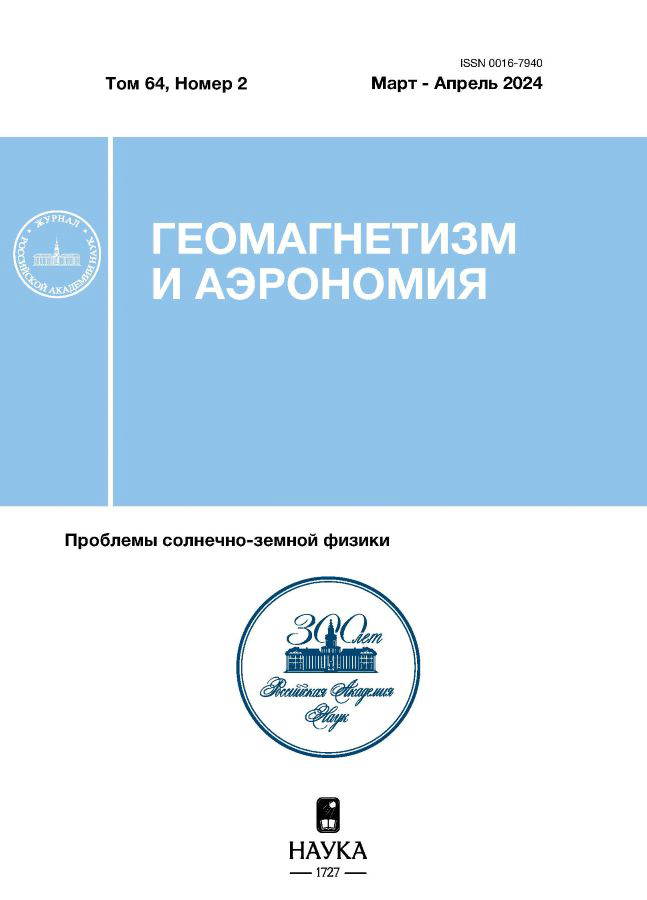Features of Radio Emission Propagation in the Ionosphere under Conditions of Threshold Nonlinearity
- Authors: Eremenko V.A.1, Manaenkova N.I.1
-
Affiliations:
- Pushkov Institute of Terrestrial Magnetism, Ionosphere, and Radio Wave Propagation
- Issue: Vol 64, No 2 (2024)
- Pages: 272-276
- Section: Articles
- URL: https://cardiosomatics.ru/0016-7940/article/view/650946
- DOI: https://doi.org/10.31857/S0016794024020104
- EDN: https://elibrary.ru/DYKOYE
- ID: 650946
Cite item
Abstract
The well-known problem of nonlinear “wave – ionosphere” interaction under conditions of threshold nonlinearity is considered. It is believed that nonlinear effects arise only for high-power radiation, when the wave amplitude exceeds a certain threshold value. The possibility of the existence of concentrated wave fields under these conditions is shown. It is revealed that a certain ratio of nonlinearity parameters leads to an increase in the radio emission intensity, since the interaction of individual solitons can lead to their merging into a higher-power solitary wave. The presence of threshold nonlinearity can lead to the formation of an ordered structure of solitary waves.
Full Text
About the authors
V. A. Eremenko
Pushkov Institute of Terrestrial Magnetism, Ionosphere, and Radio Wave Propagation
Author for correspondence.
Email: nat_man@mail.ru
Russian Federation, Moscow, Troitsk
N. I. Manaenkova
Pushkov Institute of Terrestrial Magnetism, Ionosphere, and Radio Wave Propagation
Email: nat_man@mail.ru
Russian Federation, Moscow, Troitsk
References
- Бочкарев Г.С., Еременко В.А., Лобачевский Л.А., Лянной Б.Е., Мигулин В.В., Черкашин Ю.Н. Моделирование воздействия мощной волны на ионосферу при наклонном падении // Геомагнетизм и аэрономия. 1980. Т. 20. № 5. С. 848—853.
- Бочкарев Г.С., Жильцов А.У., Иванов В.П., Карвецкий В.Л., Черкашин Ю.Н., Чернов Ю.А. Эффект наклонного радио нагрева по данным вертикального зондирования ионосферу // Геомагнетизм и аэрономия. 1992. Т. 32. № 1. С. 171—172.
- Гинзбург В.Л., Гуревич А.В. Нелинейные явления в плазме, происходящие в переменном электромагнитном поле // Успехи физических наук. 1960. Т. 70. № 2. С. 201—246.
- Еременко В.А., Манаенкова Н.И. Влияние типа нелинейности на существование сосредоточенных волн // Успехи современной радиоэлектроники. 2017. Т. 71. № 6. С. 49—54.
- Еременко В.А., Манаенкова Н.И. О взаимодействии солитонов в средах с насыщающейся и пороговой нелинейностью // Тр. XXVI Всероссийской откр. науч. конф. “Распространение радиоволн”. Казань: Изд-во Казан. ун-та, 2019. С. 505–508. С. 505—508.
- Ньюэлл А. Солитоны в математике и физике. М.: Мир, 1989. 325 с.
- Пригожин И., Стенгерс И. Порядок из хаоса. Новый диалог человека с природой. М.: Прогресс, 1986. 432 с.
- Фок В.А. Проблемы дифракции и распространения электромагнитных волн. М.: Сов. Радио, 1970. 476 с.
- Bochkarev G.S., Eremenko V.A., Lobachevcky L.A., Ljannoy B.E., Migulin V.V., Cherkashin Yu.N. Non-linear interaction of decameter radio waves at close frequencies on oblique propagation // J. Atmos. Terr. Phys. 1982. V. 44. № 12. P. 1137—1141.
- Bochkarev G.S., Krasheninnikov I.V., Sales G.S. The effects of powerful oblique radio transmission on the ionosphere on vertical sounding data // J. Atmos. Terr. Phys. 1997. V. 59. № 18. P. 2305—2311.
- Sales G.S., Reinisch B.W., Dorois C.G., Field E.C., Warber C.R. Ionospheric modification with oblique incident radio waves // Тр. II-го Суздальского симпозиума, ИЗМИРАН. М.: АН СССР, 1986. С. 79.
- Sales G.S., Platt I.G., Hainis D.M., Hang Y., Hecksher J. Recent measurement of oblique HF ionospheric modification // Тр. III-го Суздальского симпозиума, ИЗМИРАН. М.: АН СССР, 1991. С. 221.
Supplementary files














